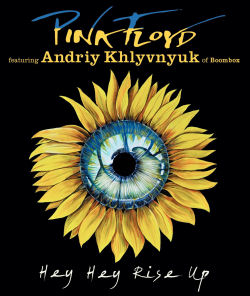



The sturdy construction of this familiar model is one of its most noticeable characteristics.

Section of the new Rudge countershaft clutch. The simplicity of construction and the large single spring are noteworthy features.

Rear wheel drive has been adopted for the speedometer.

Construction of the Rudge reversible chassis.
Assembly of the sidecar axle on the frame member.
Many Refinements in Construction and Finish, A New Light Sidecar
NOT very much change is visible in the latest type Rudge machines since the manufacturers are satisfied with the lay-out and have concentrated on refinements, most of which are not visible to the casual observer.
The two most obvious changes are a modification in the shade of green employed for the tank and the fitting of a roomy tool bag on the top tube. This. of course, is an ideal place to carry tools, since they are subjected to considerably less vibration and jolting than when placed on the carrier.
A full kit of tools placed edgeways on either side of the top tube is carried in the Rudge tool bag which is very much more generous in. proportion than is usually the case. Within the lid, also, are divisions for such tools as are required most frequently.
The tunnel covering the top tube in the bottom of the case is slightly increased in depth so as to house the cable of the speedometer drive. This drive is very neatly carried out, the actual gearing being mounted on the rear frame in such a manner that should the wheel be removed for tyre repairs the driving mechanism is left in situ.
Naturally, the Rudge fork, which has always been a most admirable feature, remains unchanged; but the mud-guarding has been somewhat improved by the employment of 6 in. domed guards, the front guard being valanced for the rear half of its arc; the rear portion of the back guard forms part of the number plate, and is hinged to the carrier as usual.
Countershaft Clutch Standardised.
In the transmission arrangement of the chain-driven machines an interesting change has been made which was foreshadowed in the Tourist Trophy mounts, for the clutch is no longer mounted on the engine shaft. Instead it is mounted on the gear shaft.
The design of the clutch is very well thought out; the chain ring, with an internally serrated drum, rotates on a ball and roller bearing on a sleeve extension of the gear shaft; and this extension, mounted on serrations, is in turn held in position by a nut.
Within the sleeve member lies the powerful single spring which serves to compress the plates, four of which, fabric faced, are splined to the outer shell. Running between these are corresponding steel plates mounted on serrations on the inner shell, which in its turn is slidably mounted on the gear shaft extension.
All the above details apply equally to the 499 c.c. and 998 c.c. models, which are similar in their general lines; the latter, however, is fitted with 700x80 mm. cord tyres.
Except for minor alterations, the well-known Rudge Multi is unaltered. It is, of course, a particularly suitable model for fast solo touring work.
An addition to the range of the sidecar bodies is a very simple and pleasing doorless model finished in green to match the machine. It has graceful lines and a roomy back, while in construction the floor has been made the foundation of the body, and is consequently fully strong enough to take the weight of a passenger even when standing upright without any other support.
Right or Left Hand Sidecar.
The ingenious construction of the chassis is also well worthy of note. In brief, it consists of a tubular hairpin, one side of which lies parallel with the centre line of the machine; this hairpin is made rigid by a very powerfully constructed rear axle consisting of a straight tube with massive forgings at both ends. The axle is clipped to the main chassis at either end, and the U bolts employed for this purpose serve also to hold the spring pads in position. By the simple process of undoing these clips and turning over the chassis and axle the chassis is made suitable for right-hand sidecar attachment for Continental work. The whole is rigid in construction, and has the additional advantage of being light.
At the front end the body is supported in two places by coil springs on the outer side member. It is claimed that this somewhat unusual arrangement of springing provides exceptional comfort.
The Motor Cycle November 16th 1922, page 699
The 1922 Olympia Show.
RUDGE. (Stand 97.)
New Four-speed Models.
3½ H.P. Model.
85x88 mm. (499 c.c); single cyl. four-stroke; o.h. inlet valve; foot pump lubrication; Senspray carb.; gear-driven mag.; 4-sp. gear; clutch and kick-starter; chain drive; 650x65 mm. tyres. Price: Solo, £85; with Sidecar, £100.
Rudge-Whitworth, Ltd., Coventry.
Chief interest on the Rudge stand centres round the models, both single and twin cylinder, fitted with the new four-speed gear box and all chain drive. This gear box, the double helical pinions of which are constantly in mesh, was described in our last issue and can be studied in detail on the stand. Opportunity is also afforded of scrutinising the technical details of the engine which, both in the case of the single and twin cylinder types, contains many special features. A sectional model on the stand lays bare the piston, which is aluminium and has special grooving designed to facilitate lubrication.
The 998 c.c. twin-cylinder outfit forms an imposing display, and the fitting and general arrangement of the new four-speed gear have been carried out in a most practical manner. The bracket supporting the gear lever quadrant, for instance, is brazed instead of being clipped to the frame.
The general specification of single and twin-cylinder all-chain models is similar, and the Rudge-Multi belt-driven machines at £55 are also well represented.
Olympia Show 1922
The Motor Cycle, November 30th, 1922. Page 858